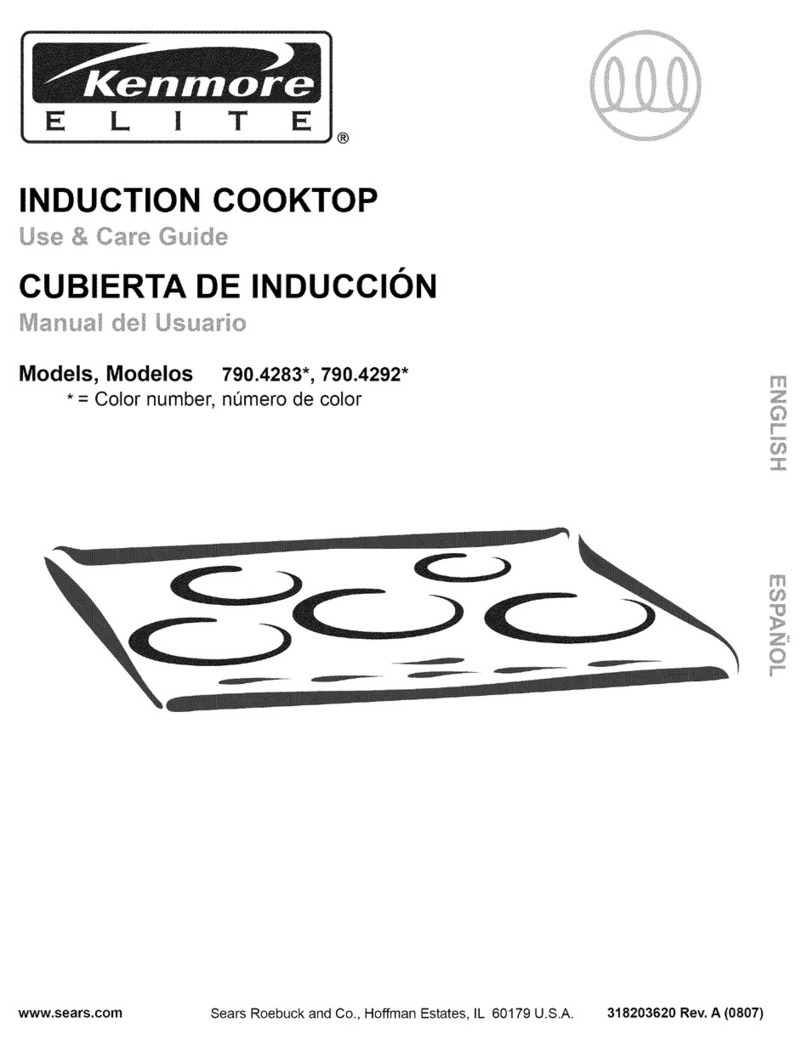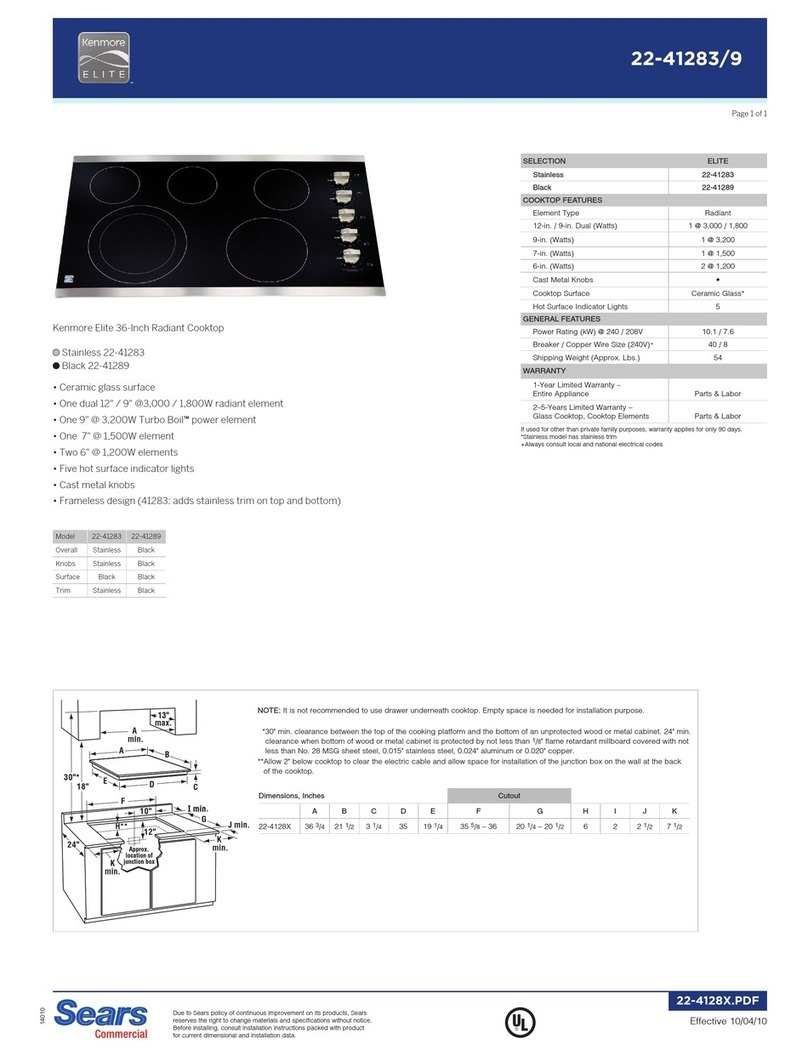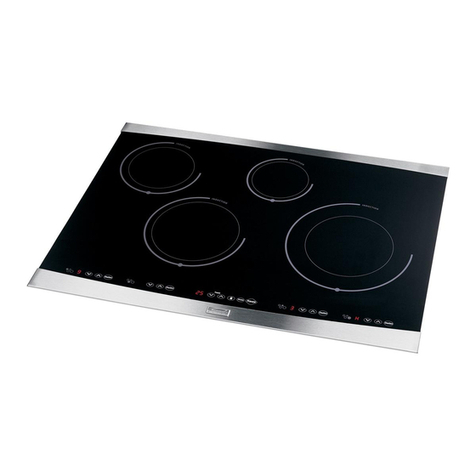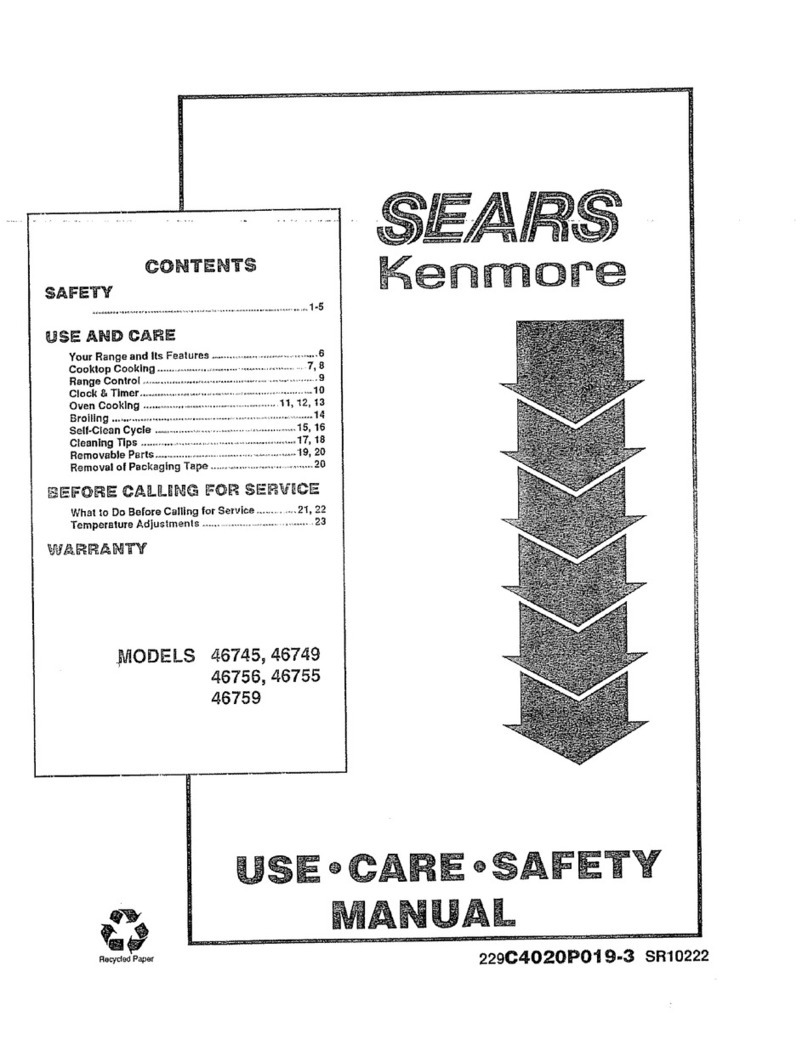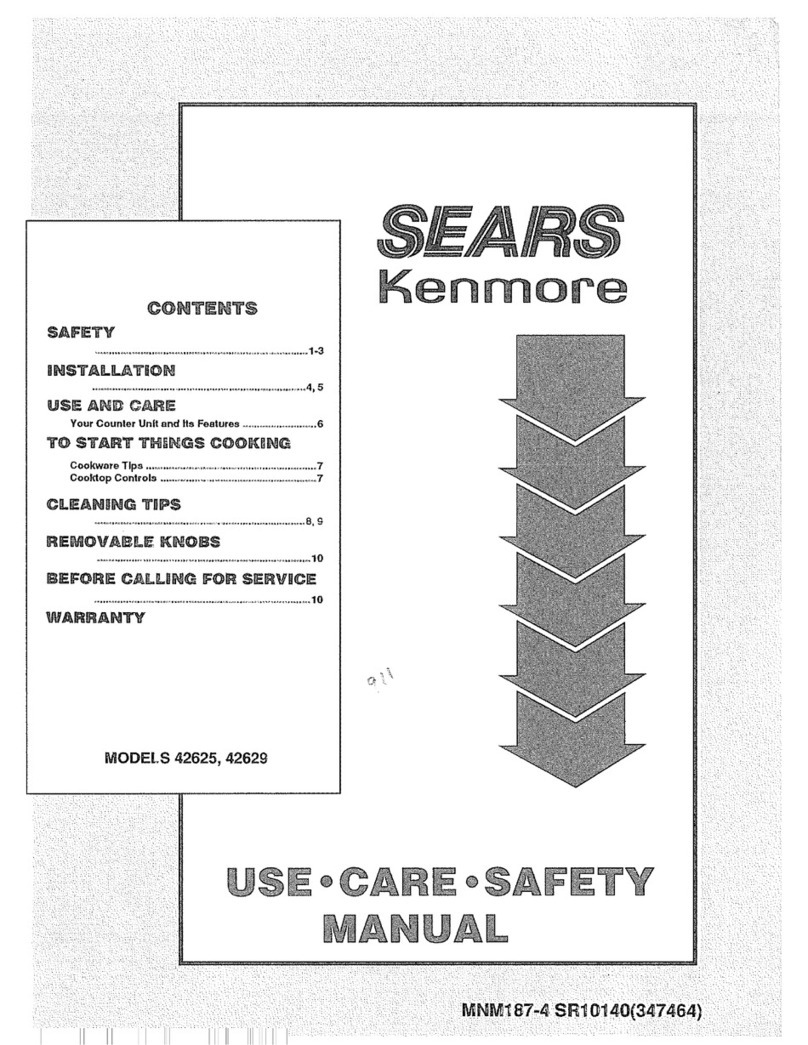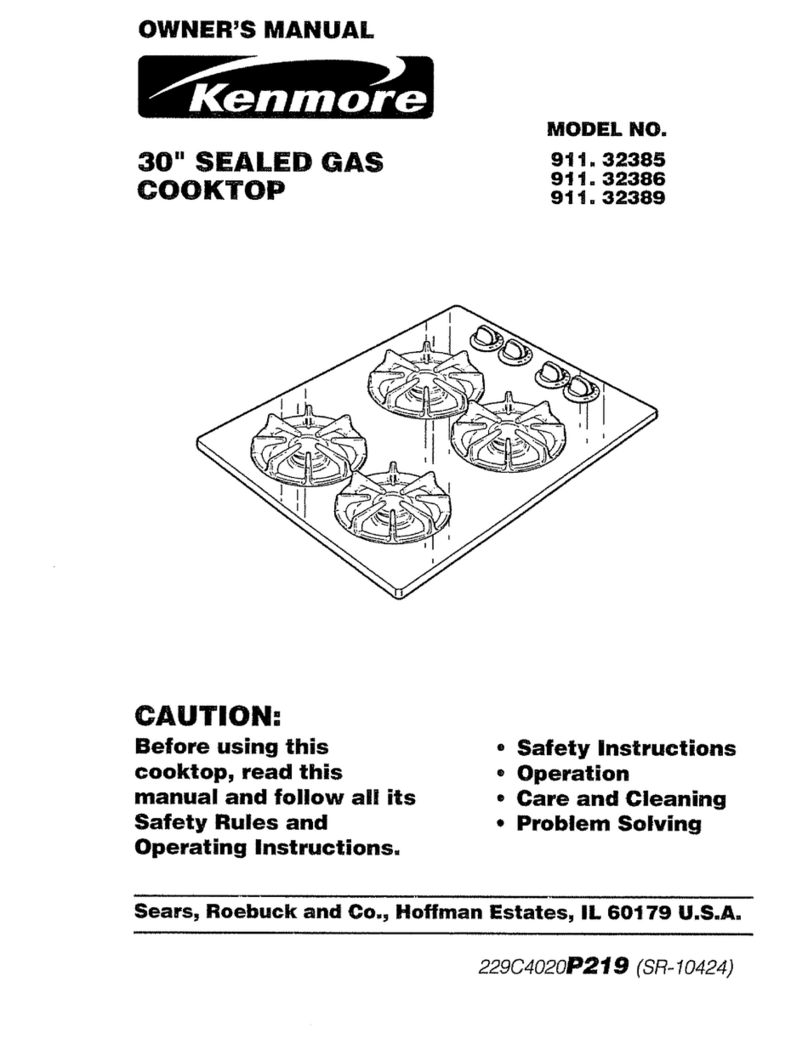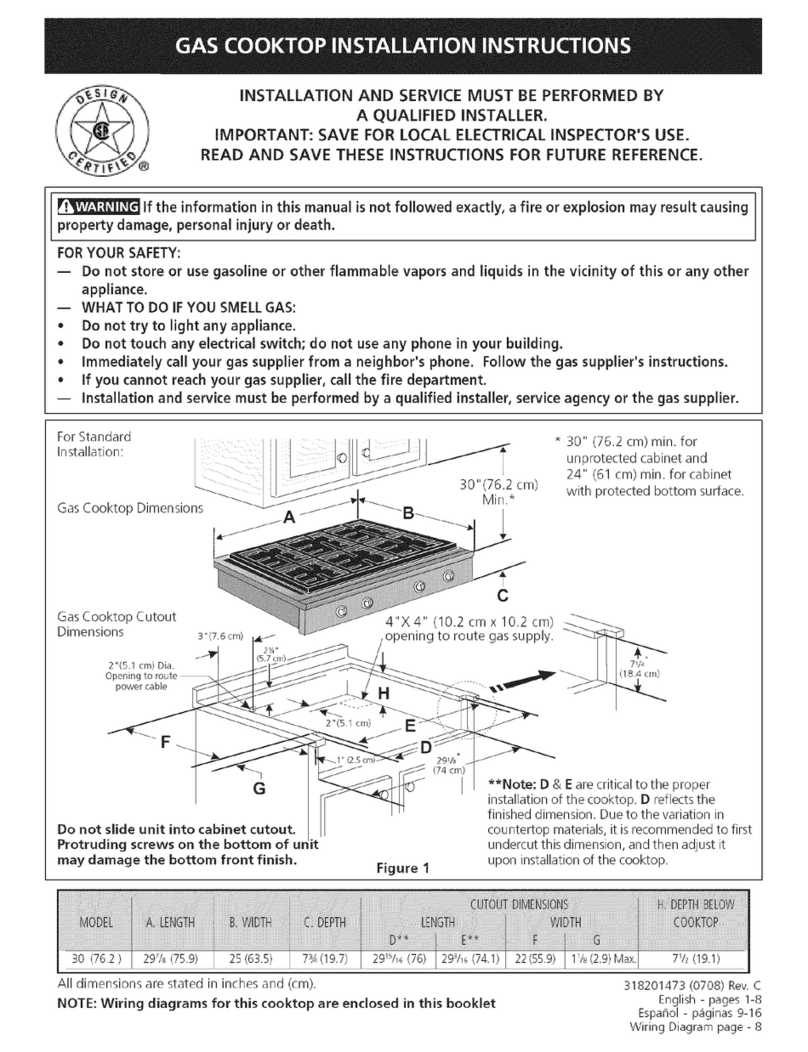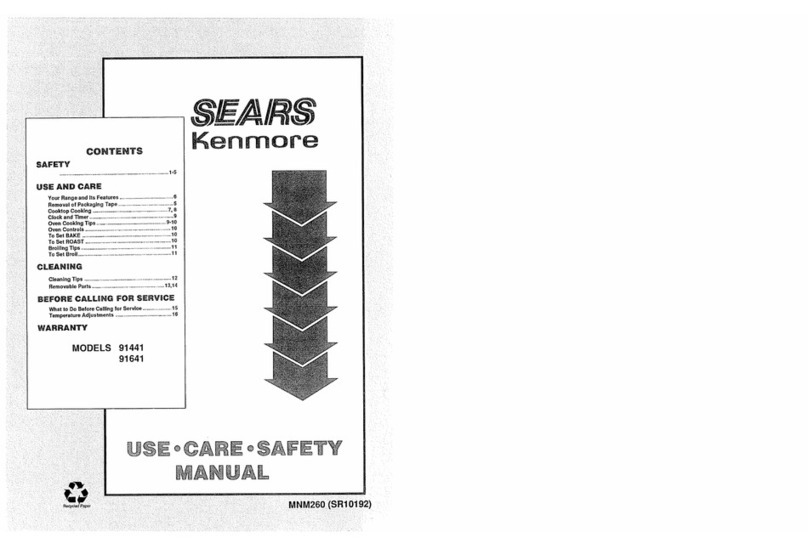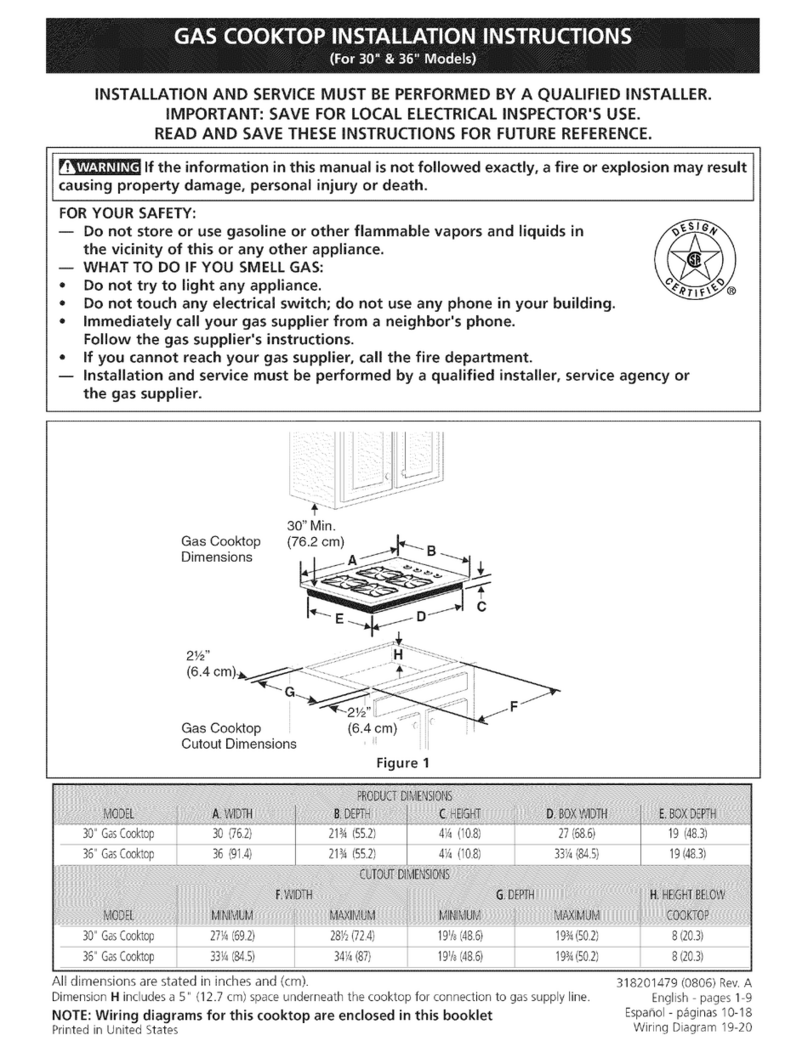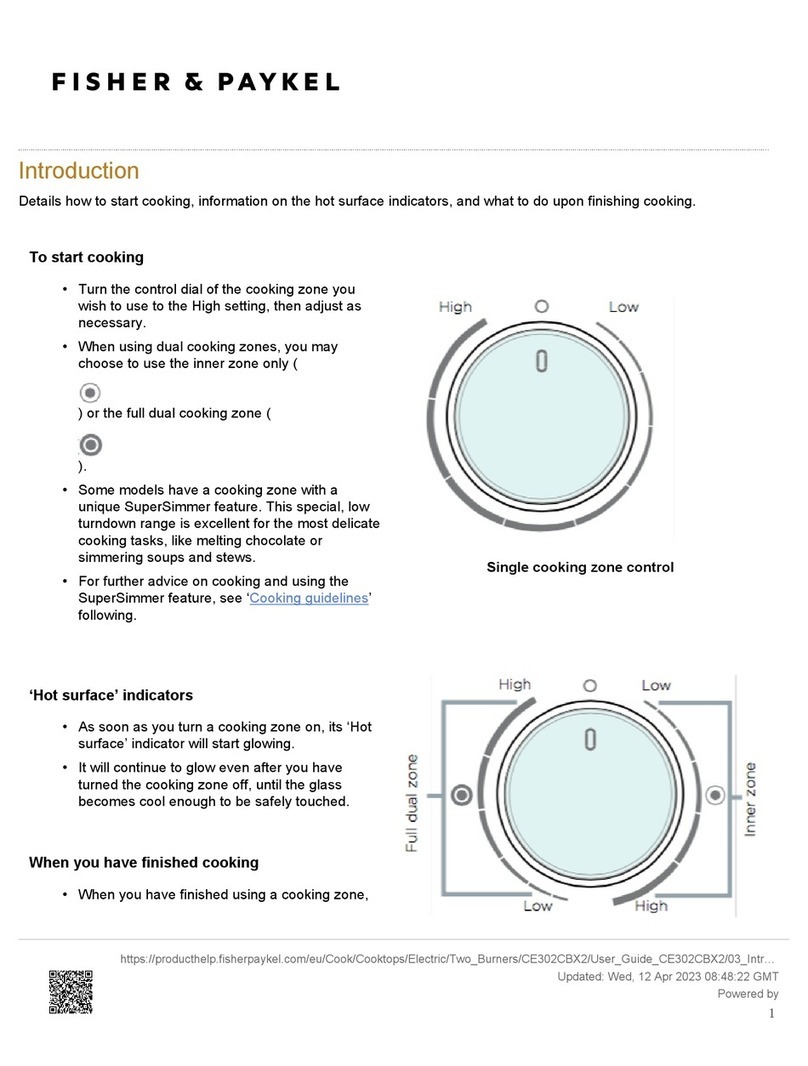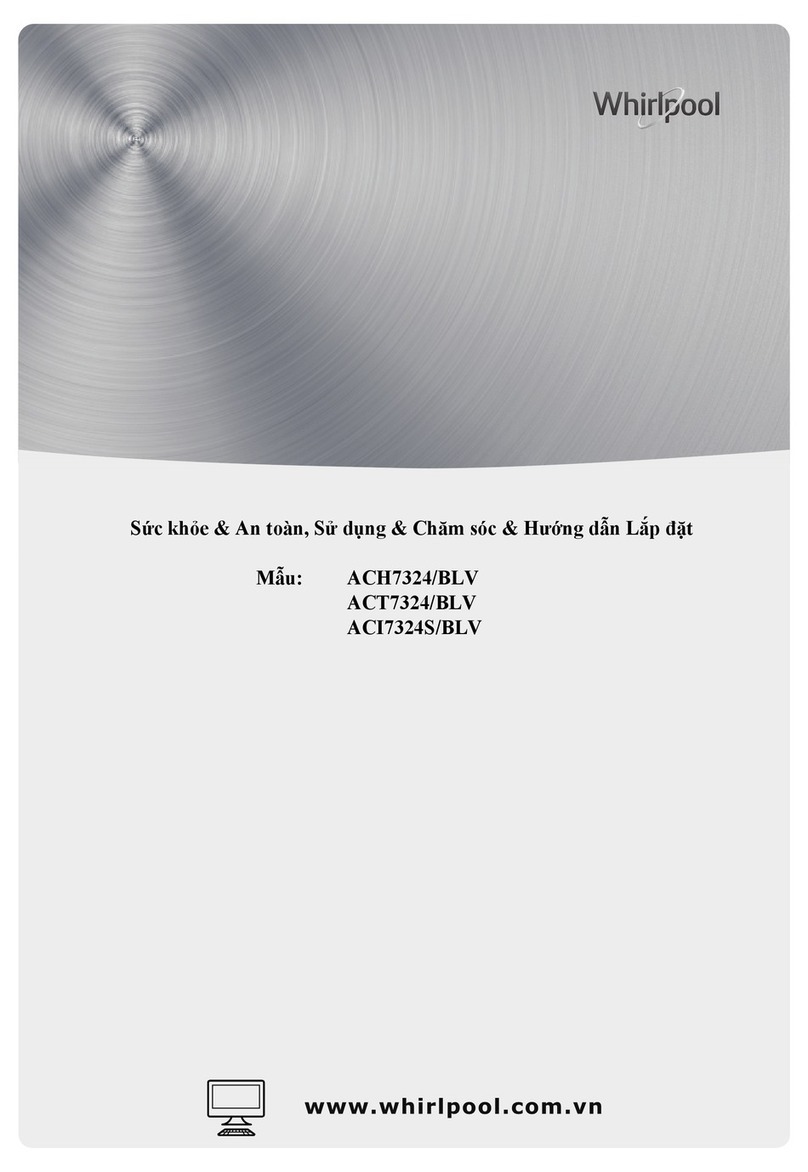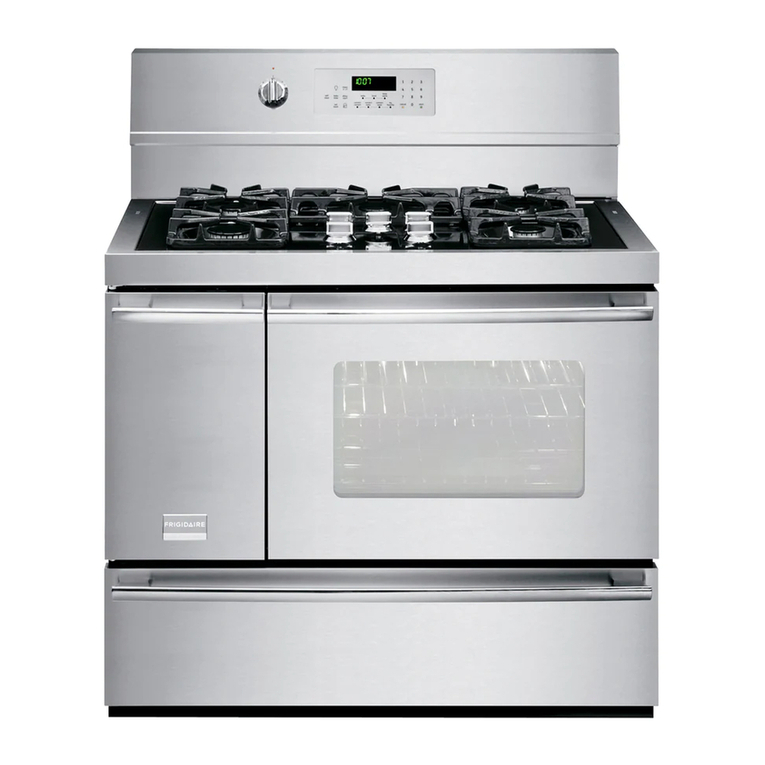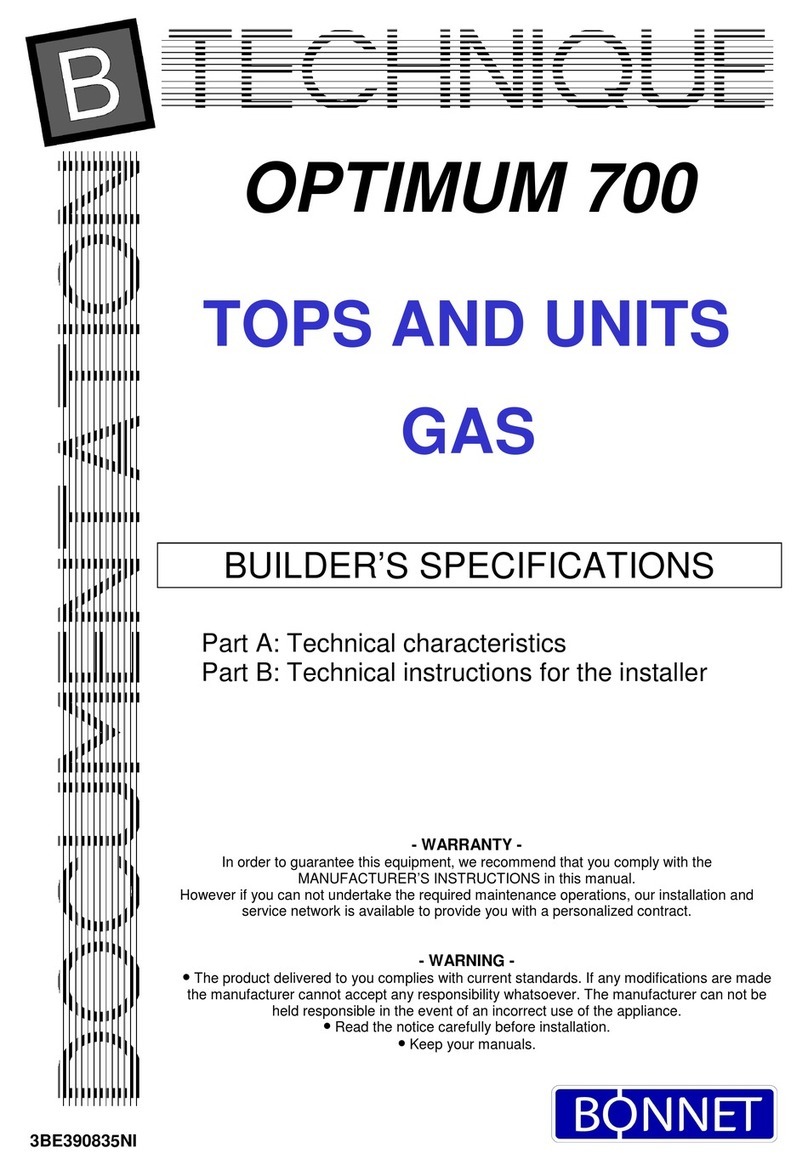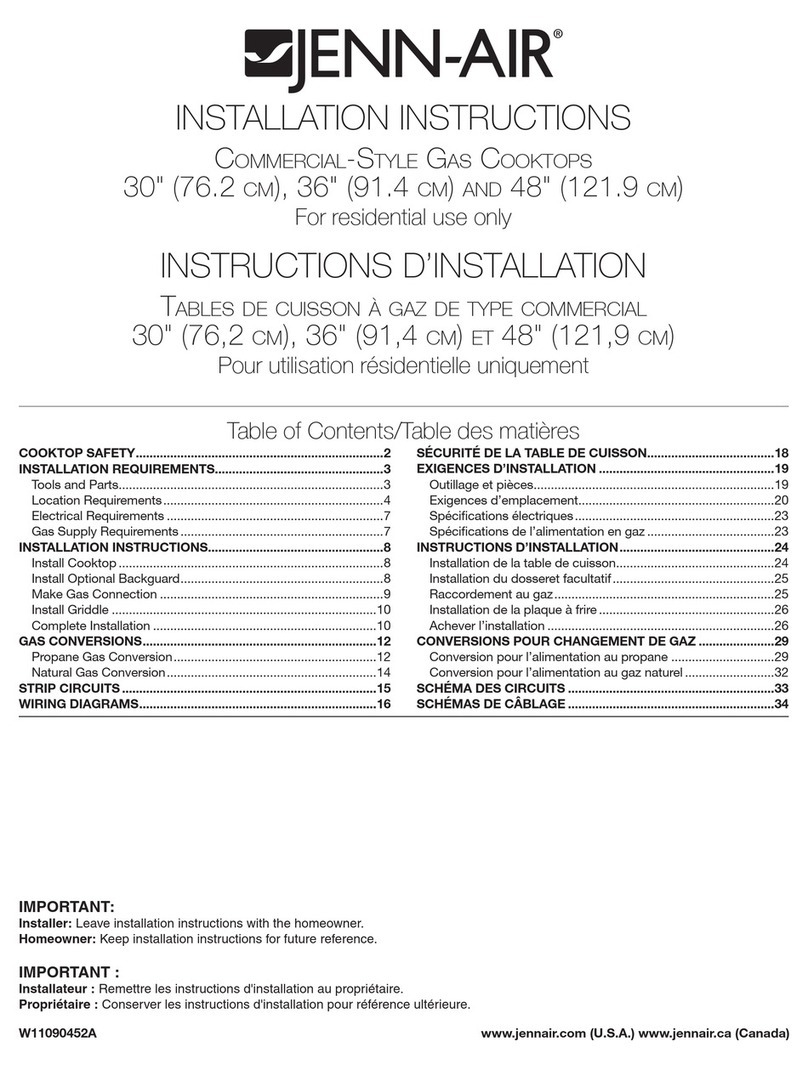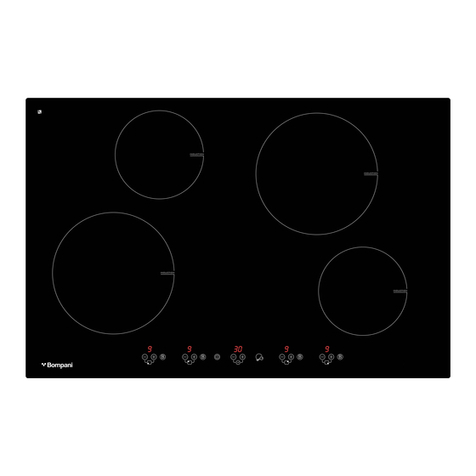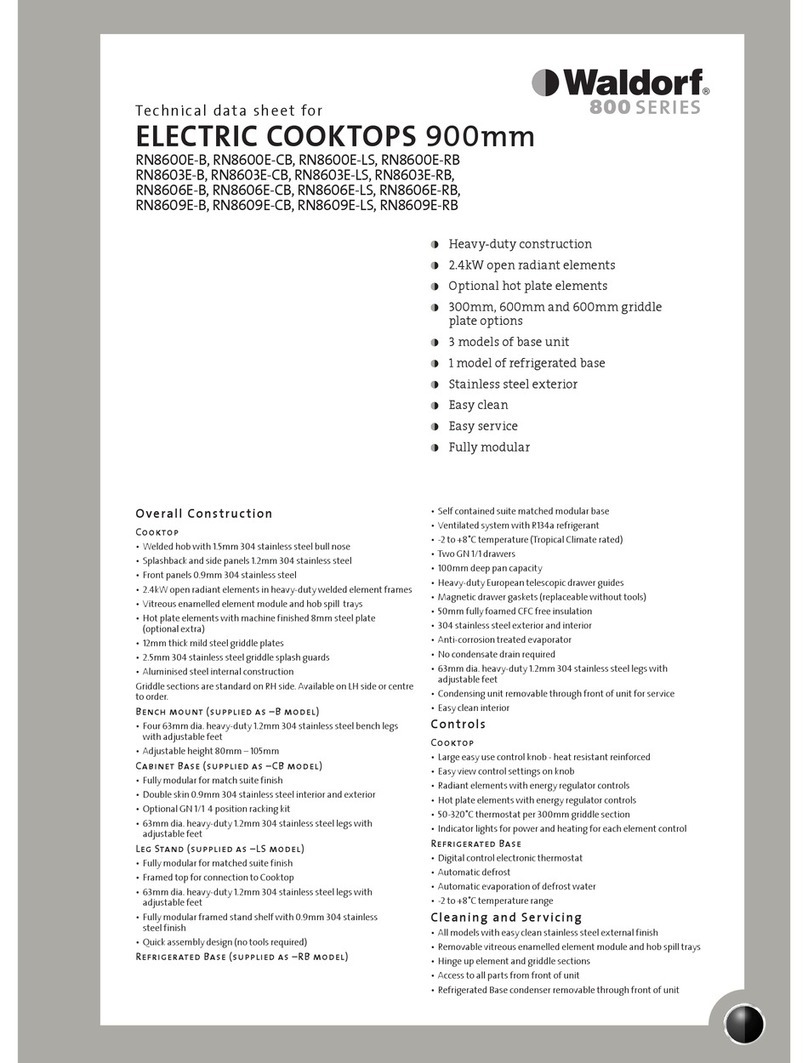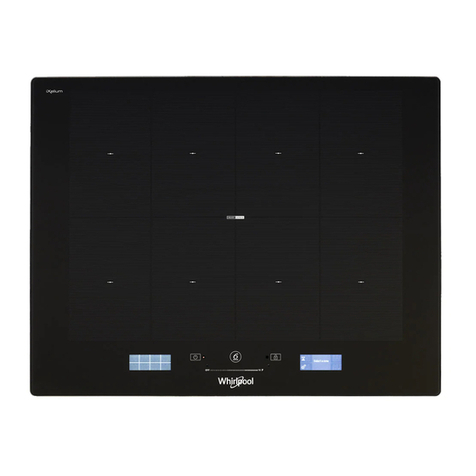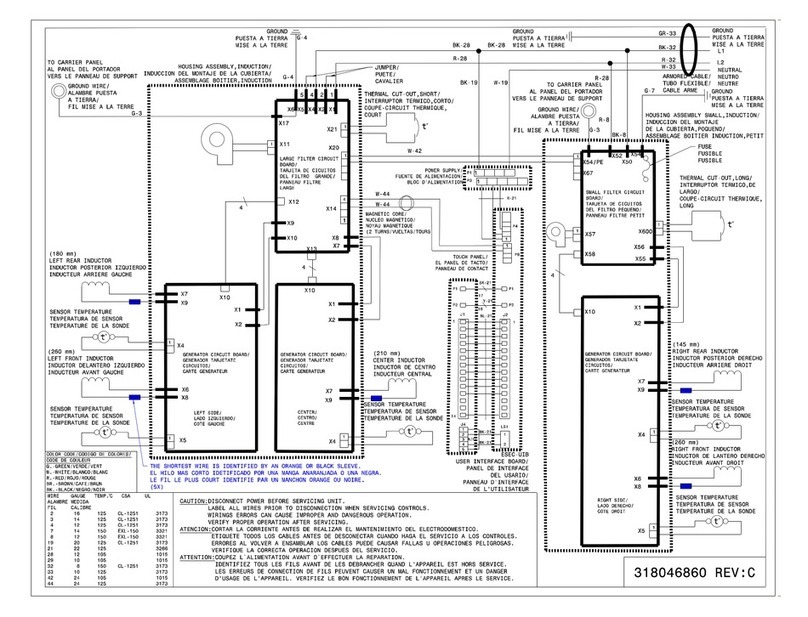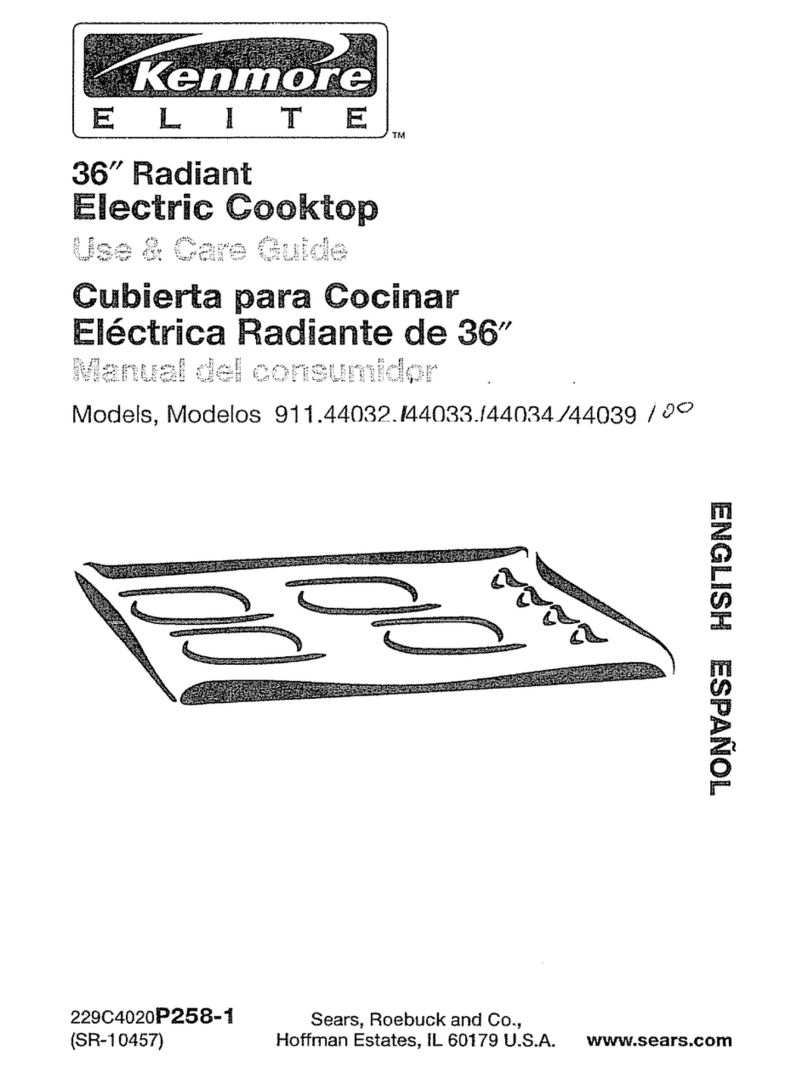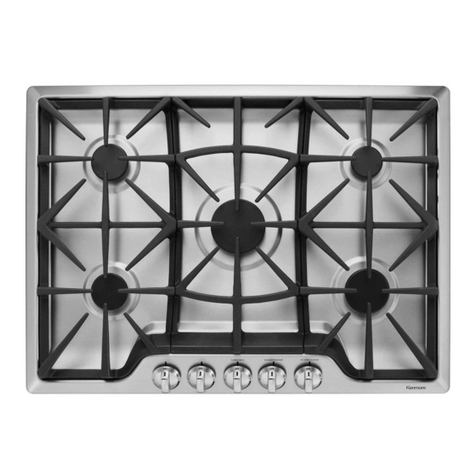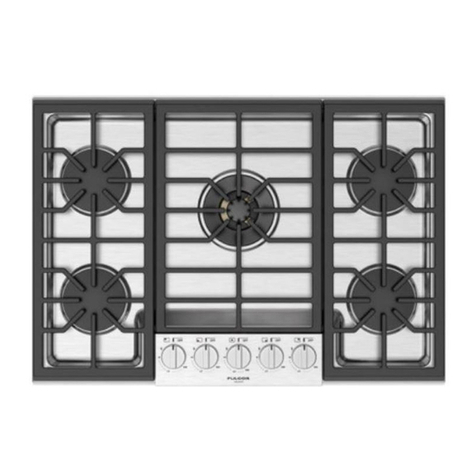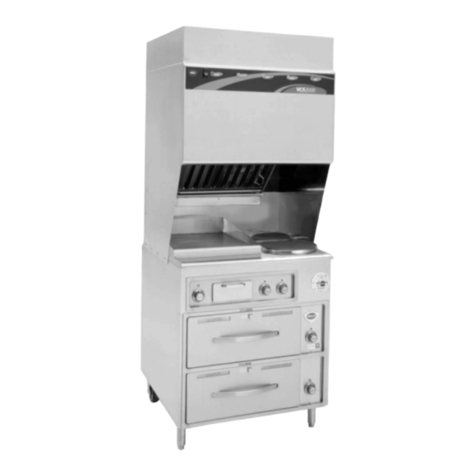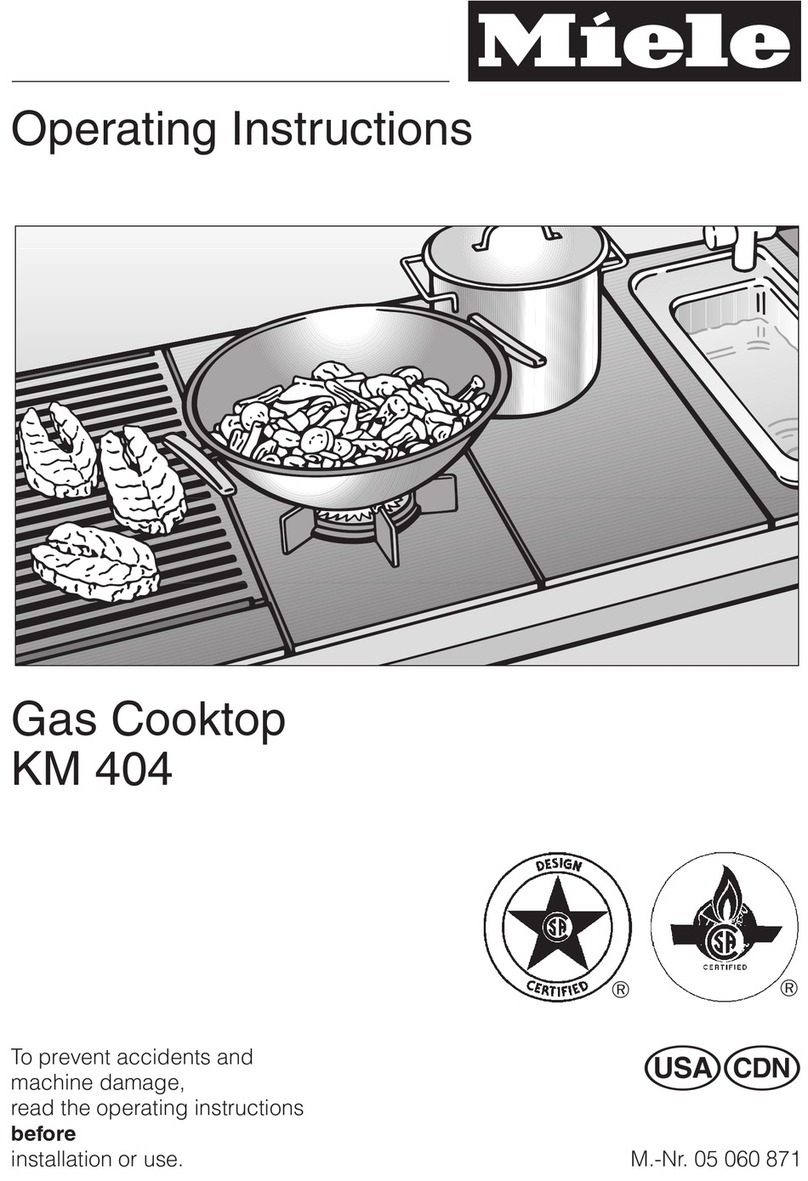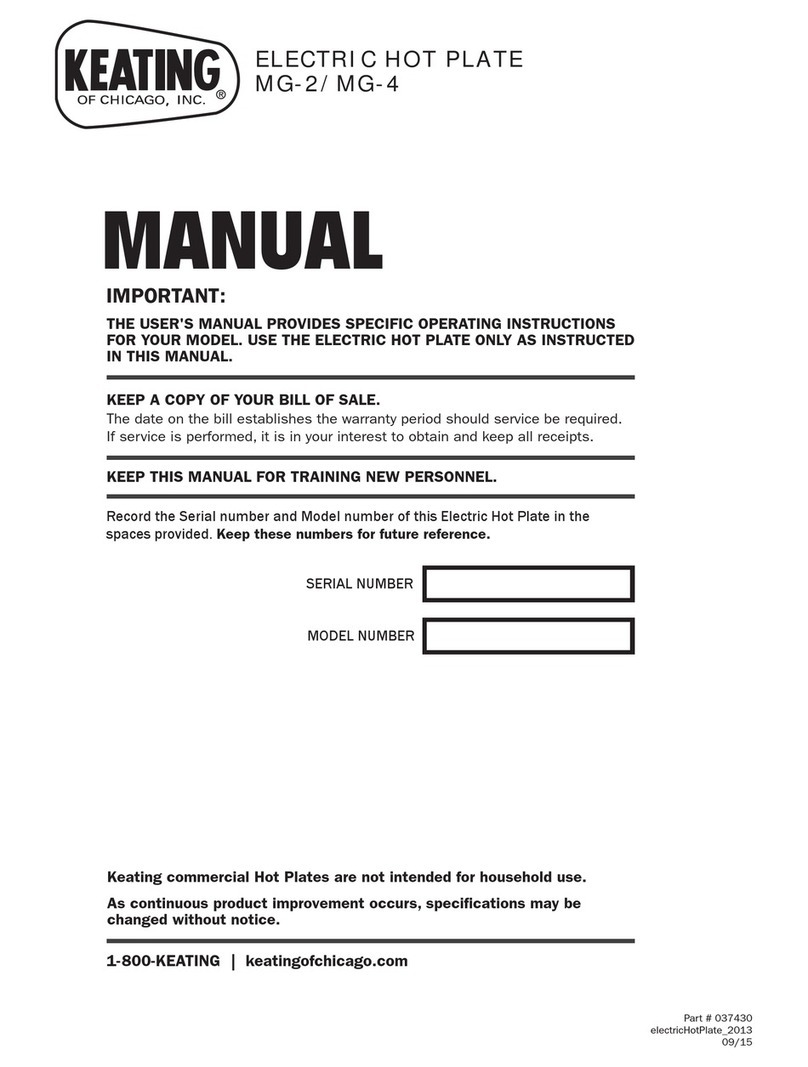
4
C970-
Product Record
(See Serial Plate Location Below )
Model No.: ____________________________________
Serial No.: ____________________________________
DateofPurchase.: ______________________________
Record these numbers for future reference.
Important Safety Instructions
Serial Plate Location
You will find the model and serial number printed on the
serial plate. The serial plate is located under the cooktop.
Please see the illustration for exact location. Remember to
record the serial number for future reference (See Product
Recordabove). Serial plate is
located under the
burner box.
• DoNotUseWaterorFlour on Grease Fires—Smotherthe
fire with a pan lid, or use baking soda, a dry chemical or
foam-typeextinguisher.
•Whenheatingfatorgrease,watchitclosely. Fat orgrease
may catch fire if allowed to become too hot.
•UseOnlyDryPotholders—Moistordamppotholderson
hotsurfacesmayresultin burnsfromsteam.Donotletthe
potholders touch the flame or burners. Do not use a towel or
other bulky cloth instead of a pot holder.
•Do Not Heat Unopened Food Containers—Buildup of
pressure may cause container to burst and result in
injury.
•Know which knob controls each surface burner. Always
turn the knob to the LITE position when igniting the burners.
Visually check that the burner has lit. Then adjust the flame
so it does not extend beyond the edge of the utensil.
Use Proper Flame Size—Adjust flame size
soitdoesnotextendbeyondtheedge oftheutensil.The use
of undersized utensils will expose a portion of the burner flame
to direct contact and may result in ignition of clothing. Proper
relationship of utensil to flame will also improve efficiency.
Do not use stove top grills on your sealed
gas burners. If you use a stove top grill on a sealed gas burner,
it will cause incomplete combustion and can result in exposure
to carbon monoxide levels above allowable current standards.
This can be hazardous to your health.
Use proper pan size—This appliance is
equipped with one or more surface burners of different sizes.
Select utensils having flat bottom large enough to cover the
surface burner. The use of undersized utensils will expose a
portion of the surface burner to direct contact and may result in
ignition of clothing. Proper relationship of utensil to the surface
burner will also improve efficiency.
• Clean the appliance regularly to keep all parts free of
grease that could catch fire. Exhaust fan ventilation
hoods and grease filters should be kept clean. Do not
allow grease to accumulate on hood or filter. Greasy
deposits in the fan could catch fire. When flaming food
under the hood, turn fan on. Refer to hood manufacturer's
instructions for cleaning.
• UtensilHandlesShouldBeTurnedInwardfromEdgesof
Cooktop and Not Extend Over Adjacent Surface
Burners—To reduce the risk of burns, ignition of flammable
materials, and spillage due to unintentional contact with the
utensil, the handle of the utensil should be positioned so that
itisturnedinward,anddoesnotextend over adjacent surface
burners.
• Never Leave Surface Burners Unattended at High Heat
Settings—Boilovers cause smoking and greasy spillovers
that may ignite, or a pan that has boiled dry may melt.
• Protective Liners—Do not use aluminum foil to line surface
burner pans. Protective liners or aluminum foil may interfere
withheatandairdistribution,andcombustion. Damage to the
cooktop or personal injury may result.
• Glazed Cooking Utensils—Only certain types of glass,
glass/ceramic, ceramic, earthenware, or other glazed
utensilsaresuitableforcooktopservicewithoutbreaking due
to the sudden change in temperature. Check the
manufacturer's recommendations for cooktop use.
• DoNotUseDecorativeSurfaceBurnerCovers.If a burner
is accidentally turned on, the decorative cover will become
hot and possibly melt. You will not be able to see that the
burner is on. Burns will occur if the hot covers are touched.
Damagemayalsobedone to thecooktoporburnersbecause
the covers may cause overheating. Air will be blocked from
the burner and cause combustion problems.
